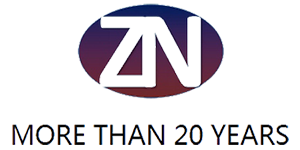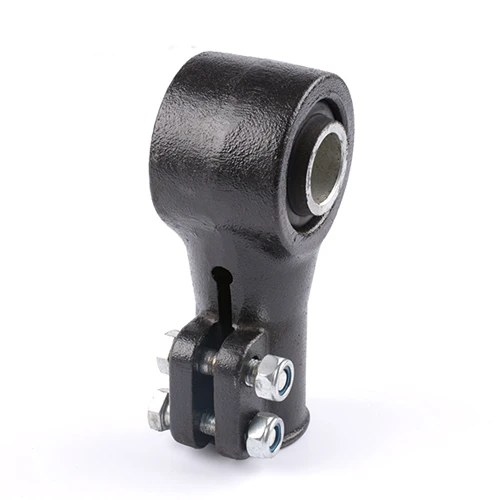One such important process in these industries is iron casting of metals. This method consists of melting iron and pouring them in molds, which is then cooled down and shattered to have the final products. Nevertheless, iron casting is a manufacturing process and it too has its own set of problems which can have an unfavourable effect on the quality. This blog focuses on the most regular problems faced by manufacturers during iron casting and along with that tips or techniques to solve those issues.
List of Common Casting Defects and Their Solution
Shrinkage Defects: Shrinkage is perhaps one of the most common iron casting defects, occurring when an area of liquid molten metal solidifies and shrinks back from a wall or end without filler material so that gaps are present in the product. Your casting design may need to include thinner sections in vulnerable areas to address this matter. Moreover, raise the temperature of molten iron suitably and use exothermic risers to eliminate shrinkage defects.
Poor Isolation: This occurs when gas bubbles end up being trapped in the liquid iron and are referred to as porosity issues. This is typically caused due to poor mold venting, moisture content in the molds and a lack of balance die casting. Improve mold venting, use dry sand molds and keep a consistent pouring rate to reduce turbulence.
SIOURCE ROUGHNESS: Surface roughness is a common issue that must be addressed and it affects both appearance and functionality. The reasons for this issue are having incorrect sand mixtures, improper temperatures at the time of pouring and lack of gating. This can be accomplished by modifying the sand mix, increasing pouring temperatures and optimizing gating design to improve metal flow.
Inclusions are part is castings impurities and foreign elements in the molten iron, The presence of such Inclusion may result defects. Material of inferior grade, poor cleaning methods or unmolding technique used Trouble-shooting by using high-quality raw materials, ensuring complete cleaning of moulds and minimum contact between the iron and ladle is introduced mainly through ladling techniques.
Lack of Fusion Defects or Cold Lap defectsFormed due to improper pouring technique that makes the molten iron unable to properly fuse together, inad-equate pour temperature These ineffective welds can translate into diminished bonds between components of the finished product which in turn manifest as cracks and breaks. This concern can be mitigated by improving pouring temperature, maintaining proper pouring practices and ensuring that the molding sand is strong enough to sustain molten iron properly.
Casting Equipment Troubleshooting Guide
Malperformances in casting equipment can as well cause disjunctures to the production process leading into such tribulations There are a number of things that can go wrong with gym equipment in general, things like wear and tear or broken/damaged parts as well as electrical faults. Just follow these steps to tackle those problems:
Find Out The Reason: Firstly, make a fine checking of the equipment and its parts to get over with the basic reason.
After identifying the source, then isolate one of its appearance and test on different part to know exactly where is it originates from.
Once you have identified the problem, either repairing or replacing a part will complete your task. This could either mean ordering parts or calling professionals to fix stuff_FINE
Test: After the repairs or replacements done, it is important to test the equipment if in a working condition. This may consist of performing experiments by either using trial production runs or implementing controlled test runs to confirm the enhancements have effectively paved for change.
Defects in Casting - Troubleshooting
In addition to the common defects explained above, there can be alot of imperfections that occur during casting such as surface dents or scratches, along with lots of other minor flaws that usually affects on final product quality. Here are the steps to solve those kind of problems:
Step 1: Type of Defect - The first step in this process is identifying the source (i.e. code or configuration) through visual inspection and looking at production logs to identify any variances during a standard production run
Prescription -> Analyze Production Process: After identifying the cause, we need to analyze production process (i.e. all of Machine Parameters) which are responsible for generating such imperfections.
If you find discrepancies not to be as per planned then correct them in the ongoing production process. This might entail making changes to casting designs, pouring temperatures, or busch energy gating and riser tube optimization for some of the ideas referred withresized_changes needed.
Best Practices to Address Problems in Iron Casting Production
The issues that are faced during iron casting are resolved by applying different troubleshooting methods:
Root Cause Analysis : This method helps the testers to find out what caused a problem in an individual test and hence, solve that from root.
Change Management : Incorporating changes in the production process to resolve issues and enhance overall efficiency.
Standard Operating Procedures: It provides consistency and empowers the operations in different ways, while also reducing a number of errors & defects.
Tips for Production Bottleneck Debugging
Iron castings are a durable and long-lasting choice for the industry that manufacturers many products, but production bottlenecks can slow down output quality. To address production bottlenecks, check out the strategies below.
Locate the Bottleneck: You will have to start by figuring out where exactly there are bottleneck reasons why this is done you go through your production data and also speak with employees in that work area.
Bottleneck: To eliminate a bottleneck, you first need to find the most severe one so that it can be removed by streamlining processes. This may involve changing production schedules or activity slots, and using fewer staff members to operate machines.
Monitor and Evaluate Following the implementation of changes, it is equally important to monitor them for outputs in order for stakeholders be able to ascertain whether or not they actually put up with viable solutions. It might include collecting data, and quality audits to continuously improve production efficiency as well product quality.
A Recap That Explains Iron Casting Production is a Difficult Manufacturing ProcessWith Inherited Obstacles and How Does It Effect Final Product Quality. Manufacturers can easily solve the problems and optimize all aspects of iron casting production by adhering to our above super easy tips, techniques and strategies.

 EN
EN
 CS
CS
 DA
DA
 NL
NL
 FI
FI
 FR
FR
 DE
DE
 EL
EL
 IT
IT
 JA
JA
 KO
KO
 PL
PL
 PT
PT
 RU
RU
 ES
ES
 TL
TL
 ET
ET
 TH
TH
 MS
MS



